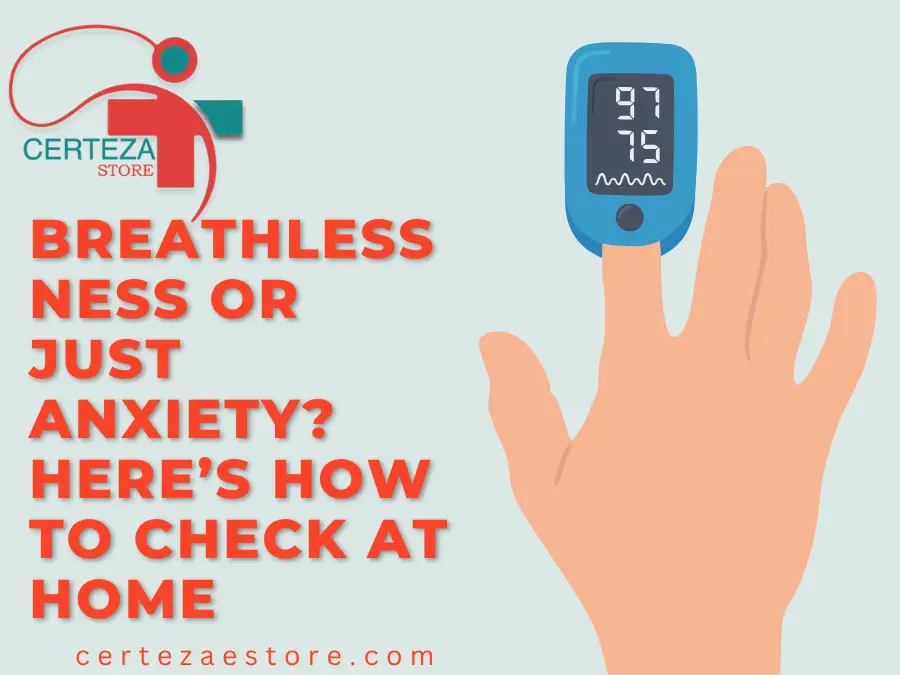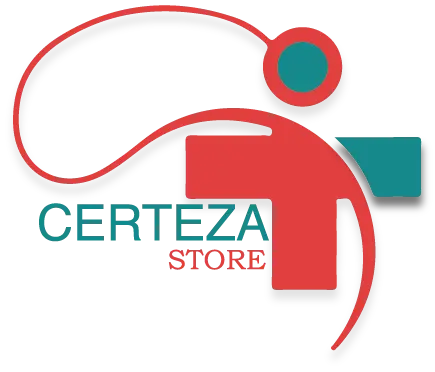- Your cart is empty
- Continue Shopping
Breathlessness or Just Anxiety? Here’s How to Check at Home

Breathlessness is scary especially when you’re unsure whether it’s a medical emergency or just stress creeping in. In today’s fast-paced world, people experience symptoms that can easily be misread. Is it a panic attack? Low oxygen? Or something else entirely? Knowing the difference can offer both peace of mind and timely action. Luckily, home tools and awareness can help decode what your body is trying to say.
What Does Breathlessness Actually Feel Like?
Breathlessness can feel like you’re not getting enough air, like your chest is tight, or you’re gasping even while resting. These sensations can appear suddenly or build up over time. In many cases, they’re linked to physical exertion or an underlying condition, such as asthma, heart issues, or even post-viral symptoms. However, the same sensations can also be triggered without any physical cause making the situation confusing.
That’s why it’s crucial to monitor such episodes carefully. Having the right tools at home allows you to observe patterns and possibly detect a deeper issue early.
Anxiety and Its Impact on Breathing
Anxiety often brings along a cascade of physical symptoms, and rapid breathing is among the most common. During a panic attack, your body enters a fight-or-flight mode even when there’s no real danger. You may feel like you’re suffocating, yet your oxygen levels might be completely normal.
Understanding this distinction is key. Instead of rushing to conclusions, using a Finger Pulse Oximeter at home during such episodes can help you monitor if your oxygen saturation is truly affected or not.
Common Symptoms: Breathlessness vs Anxiety
Here’s where things get tricky. Both breathlessness and anxiety can cause chest tightness, dizziness, rapid heartbeat, and sweating. However, breathlessness due to a respiratory or cardiac issue may worsen with activity, while anxiety-related symptoms often peak suddenly and subside once the emotional trigger passes.
Checking your oxygen saturation level at home during the episode can provide clarity. If the levels are consistently normal (95–100%), it’s more likely that anxiety is the cause rather than a drop in oxygen.
Why You Might Confuse the Two
Because both conditions mimic each other’s physical signs, it’s easy to assume one is the other. People often visit emergency rooms fearing heart attacks, only to be told it was a panic attack. While that offers relief, repeated uncertainty can damage mental peace.
Incorporating simple home-checking tools like a home pulse oximeter for breathlessness can reduce this confusion. It not only keeps you informed but also helps when communicating symptoms to a medical professional.
How a Pulse Oximeter Can Help You Understand the Difference
A pulse oximeter for anxiety symptoms doesn’t cure the issue but it brings awareness. By clipping it onto your finger, you can see your real-time oxygen levels and pulse rate. If your oxygen saturation remains steady even during discomfort, the episode is likely anxiety-based.
Devices like the Certeza PO-908 Pulse Oximeter offer accurate readings within seconds. These compact monitors are now common in health-conscious homes across Pakistan especially for individuals managing respiratory issues or high stress levels.
What Is a Normal Oxygen Saturation Level?
Normal SpO2 levels range from 95% to 100%. Anything below 90% is considered low and should be evaluated by a healthcare provider. However, it’s also important to know that anxiety doesn’t usually cause a drop in these levels it just feels like you’re not getting enough air.
Keeping a reliable Finger Pulse Oximeter at home helps you confirm your actual state instead of relying solely on feelings or panic.
When to Use a Pulse Oximeter at Home
You don’t need to use it constantly. But during episodes of breathlessness, post-flu recovery, asthma flare-ups, or even when experiencing anxiety causing shortness of breath, having an oximeter nearby gives control back to you.
Home users across Pakistan are now actively searching for tools to monitor symptoms especially since remote consultation and telehealth services have risen. In this context, products like Certeza PO-908 Pulse Oximeter have quietly become household essentials.
Signs Your Oxygen Levels May Be Too Low
Shortness of breath becomes critical when it’s accompanied by:
- Bluish lips or fingertips
- Severe fatigue or confusion
- Persistent cough or chest pain
- Oxygen saturation below 90%
These signs are a red flag, indicating the need for immediate medical help. A pulse oximeter can alert you before things worsen especially if used regularly in sensitive cases like COVID recovery or chronic respiratory conditions.
Understanding Panic Attacks and Their Physical Impact
During a panic attack, your body mimics symptoms of a serious illness: shortness of breath, rapid pulse, shaking hands, and chest discomfort. But in most cases, these symptoms aren’t due to a failing system they’re the result of hyperactive nerves and stress hormones.
Using a pulse oximeter during panic attacks may not stop the event, but it can provide reassurance that your vitals are under control calming your mind faster.
Tips to Calm Yourself During an Anxiety-Induced Breathing Episode
- Practice slow breathing: inhale for 4, hold for 4, exhale for 4
- Splash cold water on your face
- Focus on grounding (name 5 things you see, 4 you can touch…)
- Check your pulse and oxygen level it helps mentally
Just knowing that your oxygen saturation level is normal can be a powerful tool against panic.
Using a Pulse Oximeter During a Panic Attack: What to Expect
You might see a rise in pulse but stable SpO2 readings. This contrast confirms what many mental health professionals say your body is okay, even when your mind feels overwhelmed. Regular users of home oxygen level monitoring tools often report increased confidence and fewer ER visits.
Should You Consult a Doctor If Your Oximeter Reading Drops?
Yes, especially if it’s consistently below 92% or drops suddenly. But if you’re using a pulse oximeter for panic attacks and readings remain normal, it still helps to inform your doctor. Mental and physical health go hand-in-hand and accurate home readings can help your doctor guide treatment more precisely.
Best Devices for Home Oxygen Monitoring in 2025
As awareness grows, so does the market for affordable, precise home tools. From digital thermometers to blood pressure monitors, people are investing in smart healthcare. When it comes to oxygen saturation monitoring, the Certeza PO-908 Pulse Oximeter stands out for its user-friendliness, display clarity, and fast results making it a top pick among families and solo users alike.
Final Thoughts: Don’t Self-Diagnose, Monitor Smartly
The body sends signals it’s up to us to listen without panicking. By combining awareness, calmness, and the right tools, we can manage episodes of breathlessness more effectively. Devices like the Finger Pulse Oximeter help bridge the gap between panic and peace. If you’re someone who experiences breathlessness or high stress, keeping one at home can be one of the smartest health moves you make this year. Check out Certeza Store for best pricing in Pakistan.


